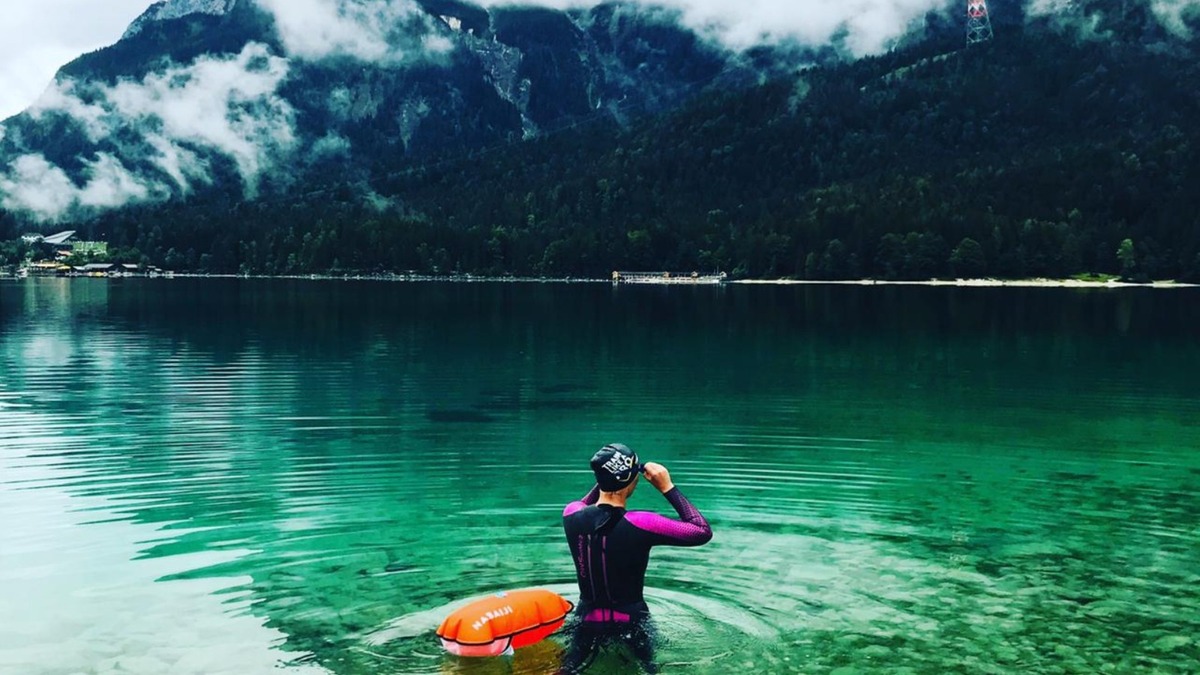Swimming blog - TRAINING Get yourself ready for open water season with these 5 tips
Early season open water swimming is normally for the diehards among us, but now it starts to become warmer, more and more of us are giving it a go. Swimming in open water as the sun rises or birds singing and the open blue sky above you is truly magical. However open water does come with some real risks, and therefore we have some great tips for open water swimming.
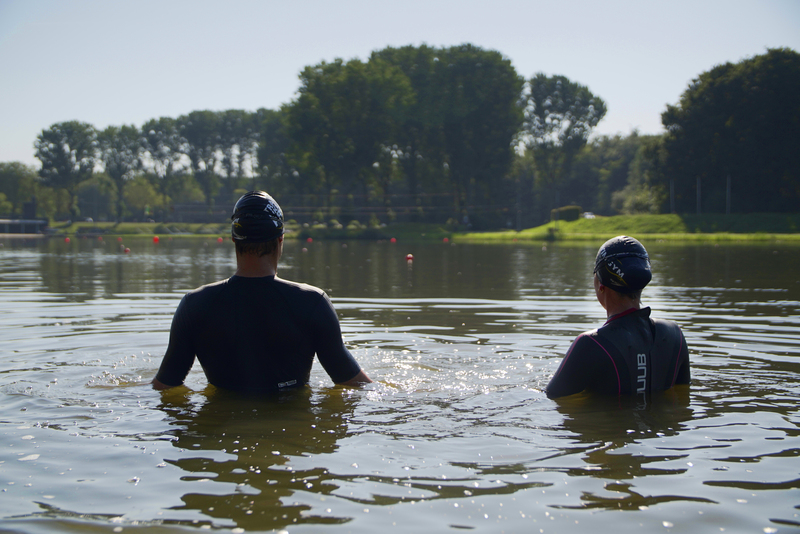
Let’s get going:
1. Use the right gear
What gear do I need for open water swimming?
You will need a wetsuit to keep you warm and help with body position. Wetsuits for open water swimming and triathlon are widely available and come in different formats. Long sleeved ones for cold water, sleeveless ones for warmer water. Thicker for fresh water and thinner for saltwater as there is more buoyancy in saltwater.
A bright swimming cap and a swimming buoy are also a must. Visibility and safety are key in open water. People in boats must be able to see you. A colourful swimming cap and a bright orange swimming buoy will do the job very nicely. On top of visibility, the swimming buoy is a flotation device that allows a swimmer to float in case of fatigue, cramp or any other emergency. In addition to the safety aspect, the swimming buoy has room for a towel and valuables. They will stay safe and dry.
Good open water goggles are handy. Open water goggles tend to be bigger and broader, allowing for greater vision and softer around the eyes to avoid abrasions. It is also recommended to get tinted goggles. The sun reflects off the water and reflective or tinted goggles can help with the sun or it’s reflection on the water into your eyes.
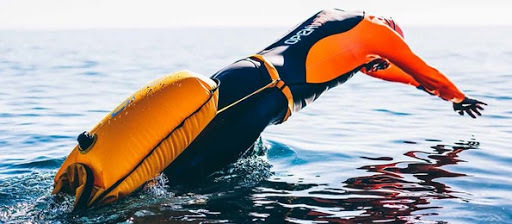
2. Local knowledge - know the conditions - ask and read up
Here are some questions you need to ask yourself before going for a swim: How cold is the water? What am I going to come into contact with in the water? What will the expected water conditions be? Am I prepared? Have I sourced a swim buddy?
2.1 Water conditions
Cold water is the main concern in open water swimming early in the season. Average water temperature in March and April varies between 9 and 15 degrees Celsius. We recommend you follow The International Triathlon Union guidelines as stated in the ITU rulebook (pg.22 bullet 4.2 and 4.3) advising distances and exposure times related to water temperature and to inform yourself accordingly. FINA rules are similar.
The ITU does not recommend to swim for longer periods of time in water colder than 14 degrees Celsius. We are not saying don’t swim in cold water, as most bodies of water in Northern Europe are cold pre-season, but do so knowingly and in stages. You have to be prepared for the temperature of the water if you go swimming in the colder months.
Current and waves in the sea. Read up or ask local surfers or fishermen about waves and currents so that you avoid rip tides or extreme sea conditions. Over time, if you swim at the same spot, you will gain some local knowledge, but until that time, don’t be too cocky.
Swim against the current first. To avoid having to swim against the current on your way back, swim against the current first. That way when you turn back, you have the current pushing you along which makes it more relaxing, fun and manageable for tired bodies.
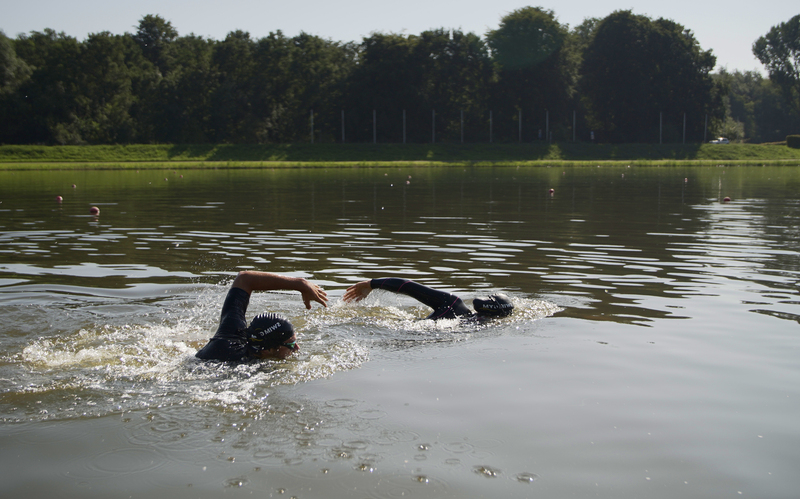
2.2 Other ‘passengers’.
Typically, you will not be able to see the bottom of where you are swimming and there will be no lane lines. What will you come into contact with? Mud, plants, fish and boats. Prepare yourself for plants and debris floating in the water wrapping themselves around you. Its normal, don’t panic. Fish won’t see you at first if you are in a wetsuit and may swim right up to you. Unless you are in shark invested waters, no need to panic.
Don’t dive or jump into water where you can’t see the bottom. This may sound like simple advice, but the dangers of murky water are many; shallow, rocky or filled with sharp objects. Reconnoiter your entry point to make sure it is deep and safe. And don’t assume that it will stay that way for future entries if you can’t see the bottom.
2.3 Traffic
Boat ‘Traffic’ is a more dangerous concern. Is there a lot of boat traffic on the water? Try and find water that has little or no traffic on it. This makes for easier and safer swimming. A lake will most likely have less boat traffic than a big water canal. Big boats are not necessarily looking out for you or care about your training goals, so seek quiet and safe water and don’t make your open water swim harder than it has to be. If boat traffic can’t be avoided, swim close to the embankment and at times where the traffic is less.
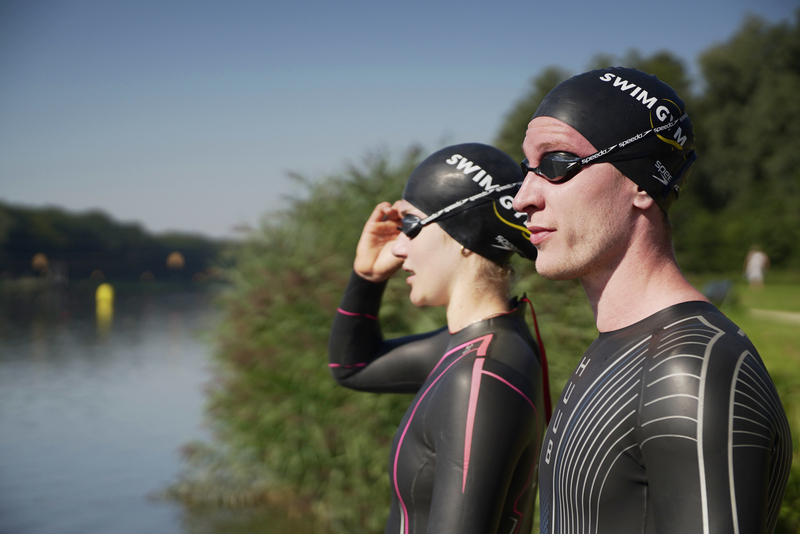
3. Preparation is key
Be prepared for after you get out of the water and have to get clothed again. Have a towel and warm clothing handy to bring your body back up to temperature in the pre-season. The stuff you take off will be wet, like your wet-suit and bathing costume, so have a plastic bag or tri-bag handy that can handle the wet goods easily.
4. Find a friend
Bring a buddy. As mentioned in the beginning, open water can be dangerous and so always swim with one other person or in a group that can help if there is a need for it. Swim close to the shoreline where possible and keep track of where you are by sighting frequently. In addition, swimming with a buddy will keep you motivated and allow you to practice those much-needed drafting skills.
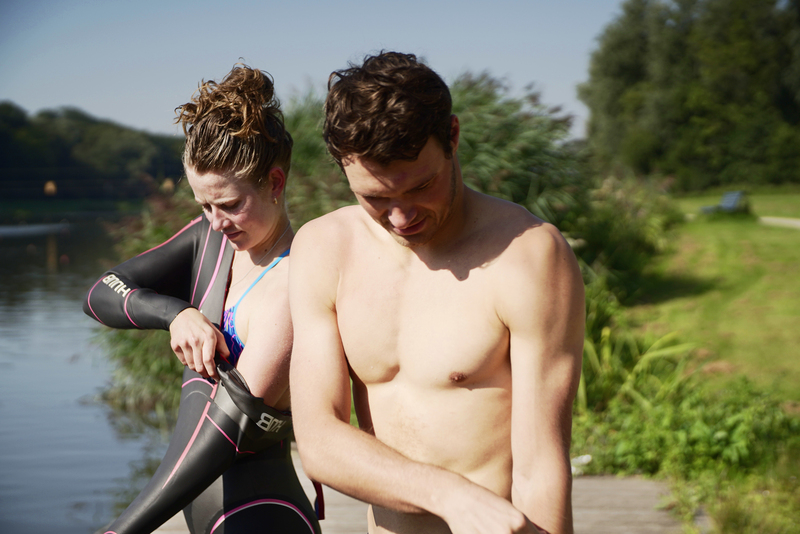
5. Stay safe
Tired? Safety and enjoyment should be foremost priorities. Don’t swim too far your first time. If you get tired, turn onto your back, float and breathe evenly. Continue when ready.
Open water swimming is a joy, a privilege and so much fun. Give it a try and you will understand why we come back to open water swimming time and time again.
